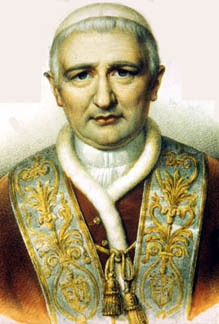APAC13
From Marist Studies
Jump to navigationJump to search
Roma locuta...

- The decisions of Propaganda were presented to Pope Gregory XVI. The official relatio would have the Pope believe that Propaganda had been dealing all the way with the Society of Mary and that it had subsequently thought it useful also to approach the Apostolic Administrator of Lyon. Fortunately, it added, the bishop has graciously promised his support in obtaining personnel as well as financial means.
- The report ended: ‘The only question now is whether the superior Colai definitively accepts the mission’. And thereby the highest level in the Church acknowledged that Jean-Claude Colin, the man unofficially elected by his Marist confreres to lead the new Society, but left on the sidelines so far, was to have the final word.
- Only then, the report concluded, would the question arise who was to become the Vicar Apostolic of the new mission. Rome at least takes things in good order.
- On 10 January 1836 Pope Gregory XVI approved the decisions of the Sacred Congregation for the Propagation of the Faith.[1]
A momentous step
- On 23 January 1836 Cardinal Fransoni informed Archbishop de Pins of the decision to erect a new apostolic vicariate (an ecclesiastical territory headed by a bishop) in the Western Pacific, and to entrust it to the priests of the Society of Mary, in the hope that they not only make a beginning with the mission but will in future continue to supply it with the necessary personnel. Fransoni asked the archbishop to exhort the superior not to turn down the offer (hortandum ... ne detrectet) and to let the superior know that he can expect in this way (hac ratione) papal approval of the congregation of the priests.[2] The same day Fransoni also wrote to Pastre with the same information.[3] He too was asked to persuade the superior to accept the mission, and was authorized to promise pontifical approval. The letters must have arrived very shortly after the council meeting of 3 February.[4] De Pins asked Pompallier to make a copy for Colin.
- Now, Colin moved fast. On receiving the copy of Fransoni’s letter he took the coach to Lyon where he met with Pompallier, Cholleton, Pastre and, probably, de Pins.[5]
- There was no doubt now of the support for the mission among the Marists. So, on 10 February 1836 Colin wrote, from Lyon, the momentous letter that determined the future of the Society of Mary and of the Catholic Church in the South-West Pacific. In answer to the request that the Sacred Congregation had addressed to the Society of Mary, and in accordance with the purposes of their Society, so he wrote, the superior and the priests of the Society gladly accept the responsibility offered to them by the Holy See, namely to open and maintain a mission in the Western Pacific.[6]
- Fransoni’s letter had not mentioned Colin by name, but had referred to the ‘superior of the said Society’. Colin still had no more than a provisional and ambiguous status. By signing the letter humbly as Colin, priest, but by referring to ‘the superior and the priests’, he ingenuously introduces himself as the one whom the Cardinal from now on will do business with. Gracefully stepping aside, Colin tells Fransoni that His Grace will soon have the honour of letting Propaganda know how many and which ‘priests of the Society’ were preparing themselves for the mission. In other words, whatever the diplomatic niceties, it is the Society of Mary that is sending them. But, not a word about the leadership position!
- Fransoni had written of ‘the congregation of the priests’, the congregatio presbyterorum, but Colin deftly parried the innuendo by speaking of ‘the priests of the Society’, les prêtres de la Société. He stood his ground and held to his vision of what the Society of Mary wanted to be, i.e., a community of more than priests alone. Colin was a man of principle and a past master in letter writing.
- Not having heard as yet from the Sacred Congregation for Bishops and Regulars, the only instance competent to actually issue the pontifical approval of the Society, Colin appeals to Fransoni to use his good services to obtain the possibility of ‘strenghtening the ties that have united them (i.e. the Marists) in the pursuit of the same end’. He avoids being too specific, and flatteringly adds that His Eminence would thereby gain another right on ‘our eternal gratitude’. Having said this, he tightens the screws by saying that approval would hasten the departure of the missionaries, which was what Fransoni wanted. The Society was now committed to Oceania, but its approval was so far only promised, and not by the department competent to grant it. Colin did not relish the prospect of running a mission in permanent negotiation with two bishops!
- The clerk at Propaganda got the point. In the usual summary he noted the action required: ‘The Superior of the Marists asks for the approval of the congregation, so as to expedite the sending of the men’.[7]
Notes
- ↑ OM I, doc. 356.
- ↑ OM I, doc. 359.
- ↑ OM I, 360.
- ↑ OM I, 366. Cf. above, p. 11.
- ↑ OM I, p. 843, n. 1.
- ↑ OM I, 368. On Colin writing letters, cf. P. Bearsley, Father Colin on the Spirit of Faith, Spirit of Prayer, Humility and Self-denial, in Forum Novum, vol. 4, nr. 2, p. 186 n. 1.
- ↑ OM I, 368, [4]. Cf. OM I, p. 840, n. 4.
| Previous Section | A Piety Able to Cope | Next Section |